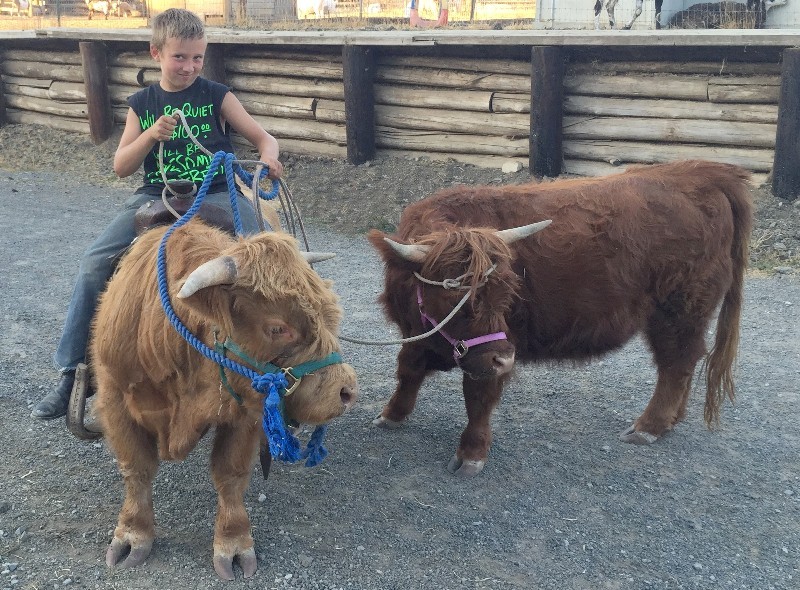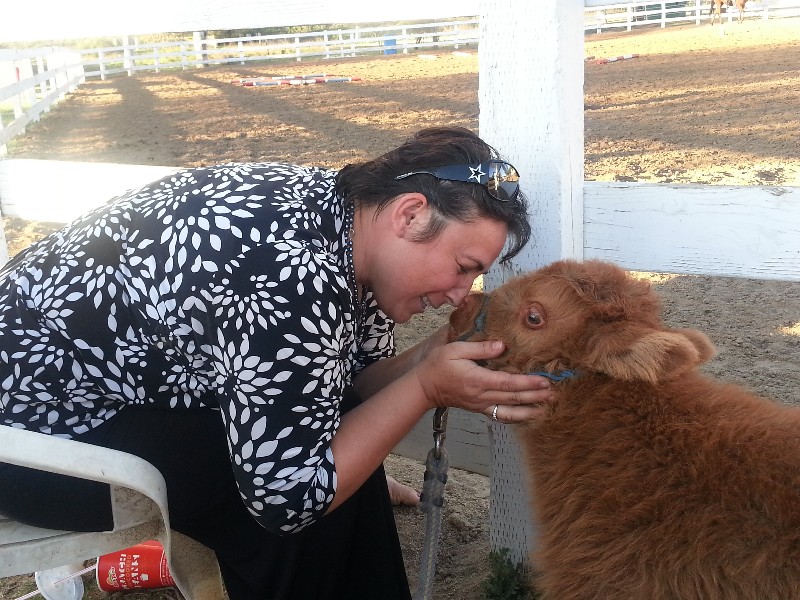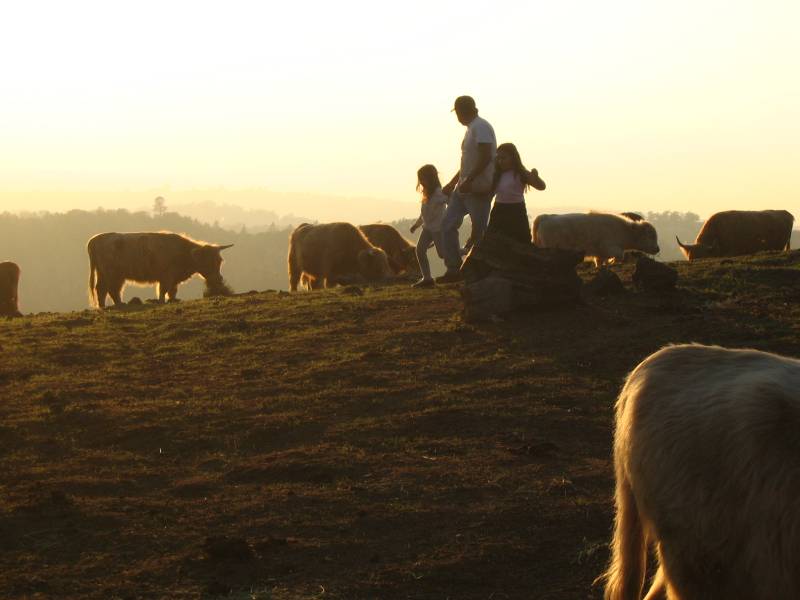What is it Like to be Around Mini Highland Cattle?
Disclaimer: I have not trained an animal to lead for years because we have not been showing animals in competition at fairs, etc. Even back then, I had my kids, during their summer vacation, teach them to lead.
I think it is best to start with a very young animal (3 to 4 months) and raise it. It doesn’t take much, but you need to personally feed it. Others can also feed it. Start it on a lead as soon as possible – like right away. They can be stubborn, but it won’t take long.
take much, but you need to personally feed it. Others can also feed it. Start it on a lead as soon as possible – like right away. They can be stubborn, but it won’t take long.
If you are uncomfortable using strength, it could take a little longer, but may work out as well or better. Keep treats in your pocket, etc. Get it to look forward to you being there.
Ultimately, it may follow you even without a lead. I had a wonderful bull that was raised by a 10-year-old that rewarded it with those little powdered doughnuts! He would follow me around the pasture when I was fixing fence and get right behind me. My worry then was that he would want to play. Also, intact bulls can be very aggressive if there is a cow or heifer in heat. Usually they will ignore you, but if they are chasing a female, it is best to stay away – at that point even food is secondary.
 Steers (castrated bulls) are a likely choice as a pet because the males have the least to worry about. HOWEVER, even the minis can weigh 500lbs + at maturity and if they really need to win an argument, they can.
Steers (castrated bulls) are a likely choice as a pet because the males have the least to worry about. HOWEVER, even the minis can weigh 500lbs + at maturity and if they really need to win an argument, they can.
Females with calves under about 6 months can be very protective, even aggressive. It depends on the amount of trust they have for/with you.
My best advice is to always be on your guard because they are bigger than you and can be a problem even if they are playing.
Having said all that, I have no problems with my herd which are all “range” animals. I feed them in winter and I’m in the middle of 60 of them throwing hay and their horns never touch me, although they jostle each other pretty good! It is a good time to try and get them used to you by scratching their back haunch. The likely will move away, but sooner or later, they won’t and they can get used to that nice scratch where they have a problem getting to.
I keep a chair in the pasture so I can sit with them when I have time. When I’m sitting low like that, they are less intimidated and will come closer. If I have some grain, I’ll hold it out to the side and not look at them (when you look at them, they are more likely to think you are up to something) and usually one will come up and take the grain. I love to sit with them because they are so peaceful. I’m amazed by them and very respectful. It is easy to be respectful because Highland Cattle are very very wonderful to be with. It is a delight and a privilege that I can’t properly explain.
We no longer break our animals to lead because we stopped showing years ago when we lost the help that our kids gave us. They were the ones that worked with the new animals every summer. My wife and I had demanding jobs and just could not spend the time with them to break them to lead.
 We have had hundreds of Highlands, and a few aggressive ones (they make excellent hamburger). You must always respect them and try to understand their mood and point of view. We frequently take people and children into the pasture when we are feeding, etc. but I’m always watching to see if any cattle are overly nervous, and if so, I ask people to step away. The cattle will signal their feelings – usually with a shake of the head.
We have had hundreds of Highlands, and a few aggressive ones (they make excellent hamburger). You must always respect them and try to understand their mood and point of view. We frequently take people and children into the pasture when we are feeding, etc. but I’m always watching to see if any cattle are overly nervous, and if so, I ask people to step away. The cattle will signal their feelings – usually with a shake of the head.
There is a surplus of mini bulls, so steering them is a good option for breeders and they usually can afford to let the steers go at a much lower price.
A number of our buyers have 10 or less animals. They seem to have the time and desire to tame and socialize them. On a regular basis, Mini Highland Cattle go to schools, fairs, parties, celebrations, exhibitions, shows, etc. Those that have been socialized seem to enjoy the interaction with people of all sizes. They are always a big hit. Some stay on the farm and make very nice pasture companions for their owners and other animals.
 Highland Cattle were recognized as a registered breed in the 1800’s. Most breeds today are the result of crossing a few breeds, or many breeds, to achieve an end result such as long legs, great spring of rib, heavily muscled, large udders, etc. Not so with Highland Cattle. Likely they are the closest thing to the original wild cattle that there is. Sometimes I say “they haven’t had the brains out of them”.
Highland Cattle were recognized as a registered breed in the 1800’s. Most breeds today are the result of crossing a few breeds, or many breeds, to achieve an end result such as long legs, great spring of rib, heavily muscled, large udders, etc. Not so with Highland Cattle. Likely they are the closest thing to the original wild cattle that there is. Sometimes I say “they haven’t had the brains out of them”.
Personally, I am always in awe of their innate intelligence. A different intelligence than ours, but very worthy of respect and a place that is soothing to our spirit.
Rick Sanders has had Miniature Highland Cattle since 1992. He and his wife owned Blue Dawn Farm in Portland, Oregon. In 2003 they moved their cattle to their new Trembath Mountain Ranch in Fiddletown, California. Rick founded the International Miniature Highland Cattle Association, Inc. (IMHCA) and can be reached at P.O. Box 22, Fiddletown, CA 95629, 209-245-4900 or rsanders@integritydm.com .
